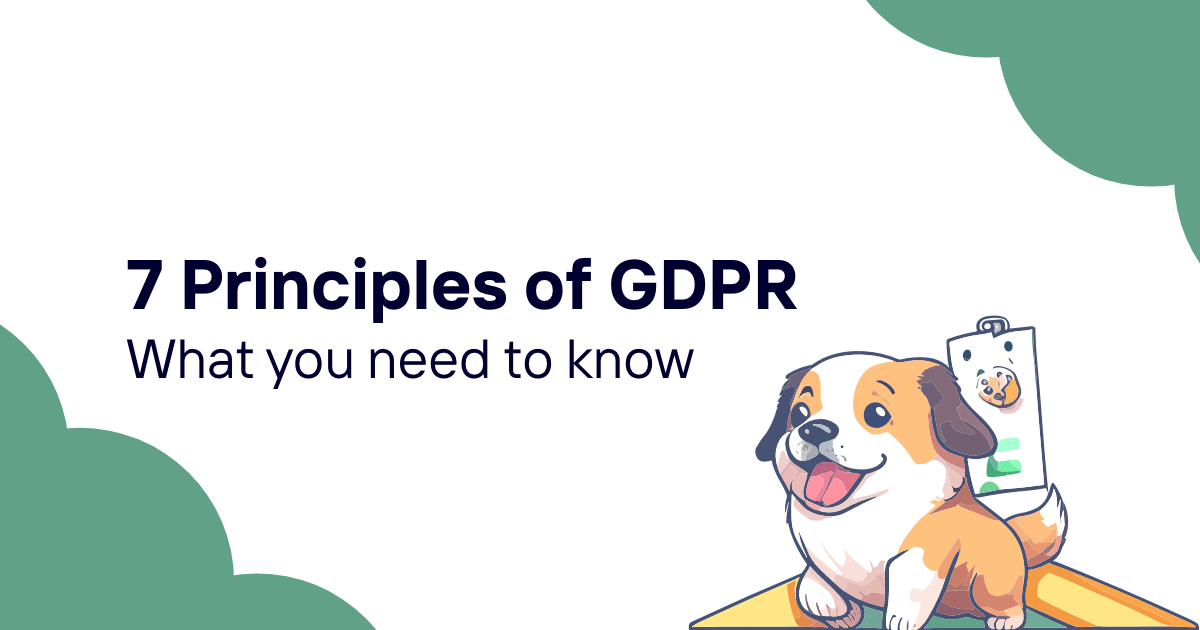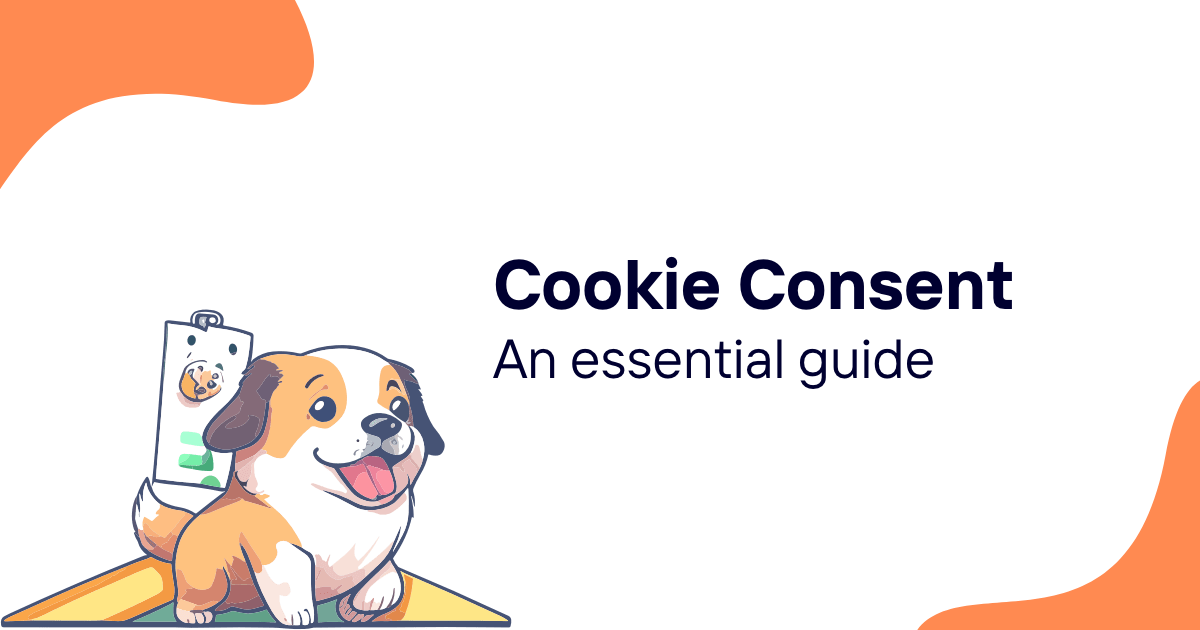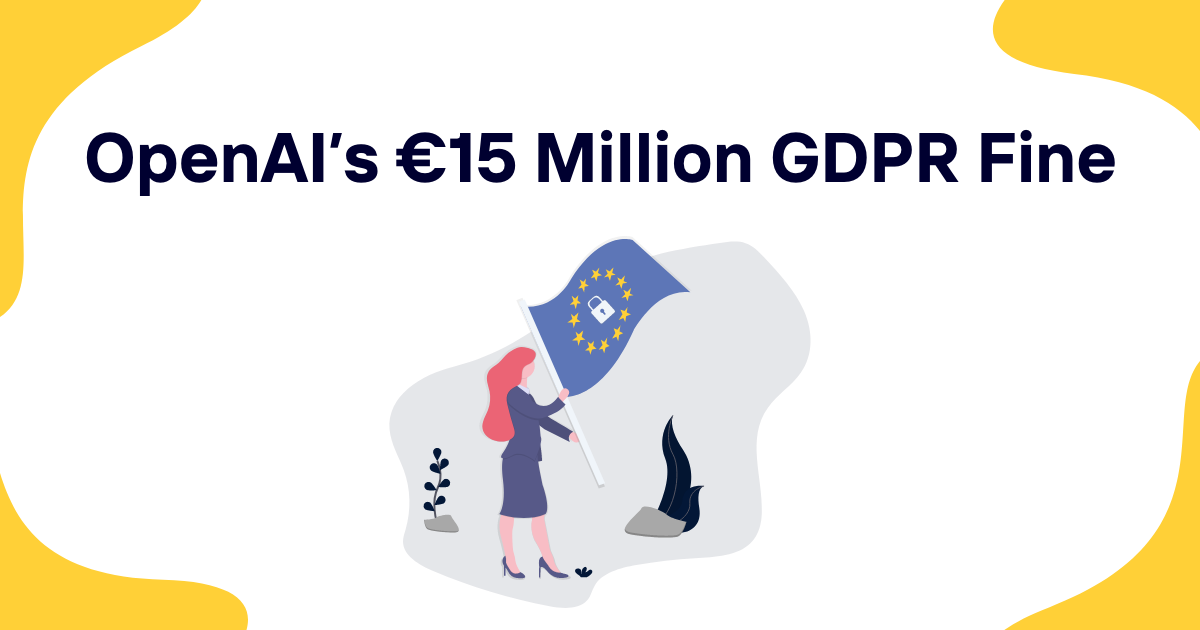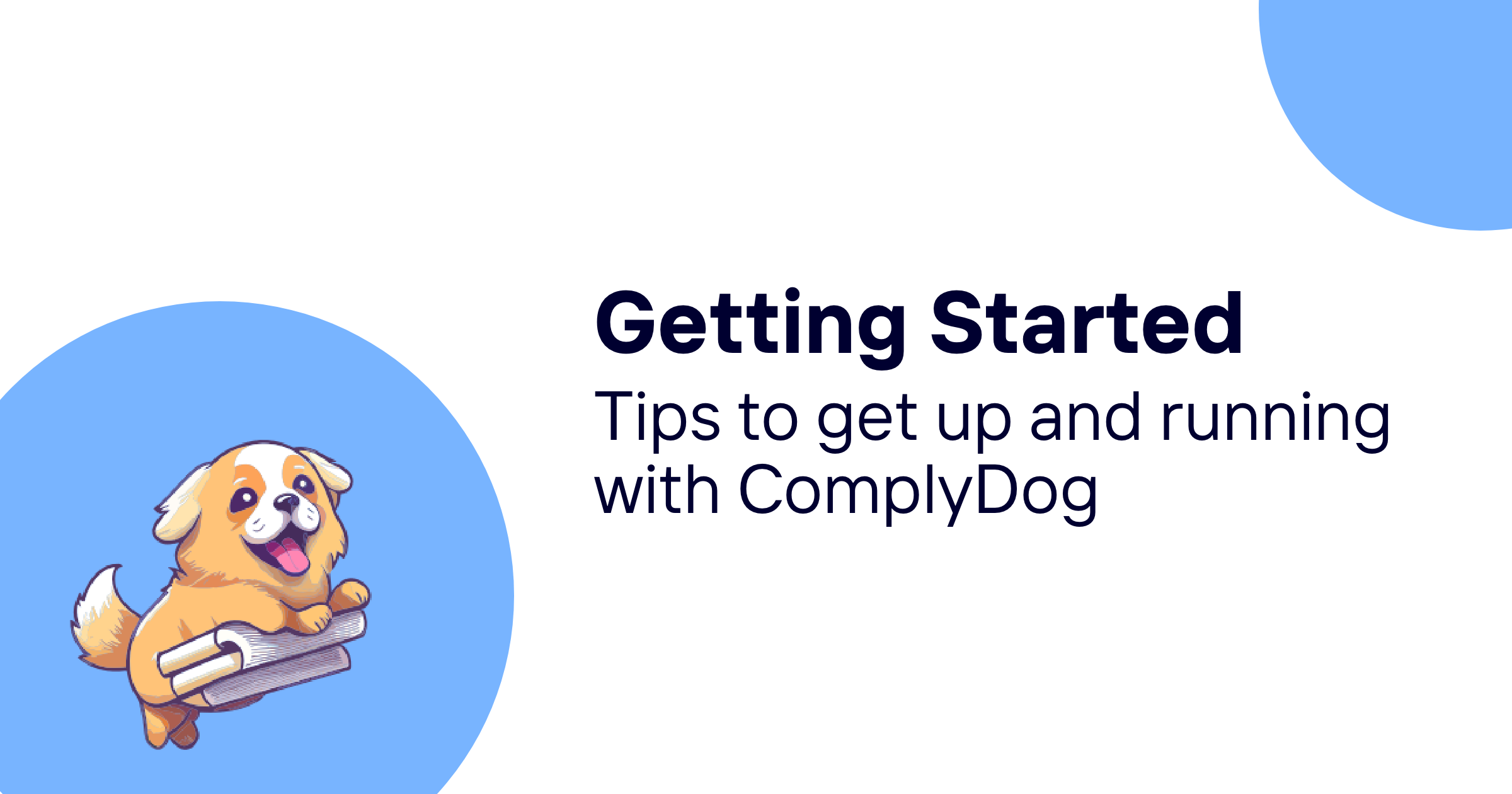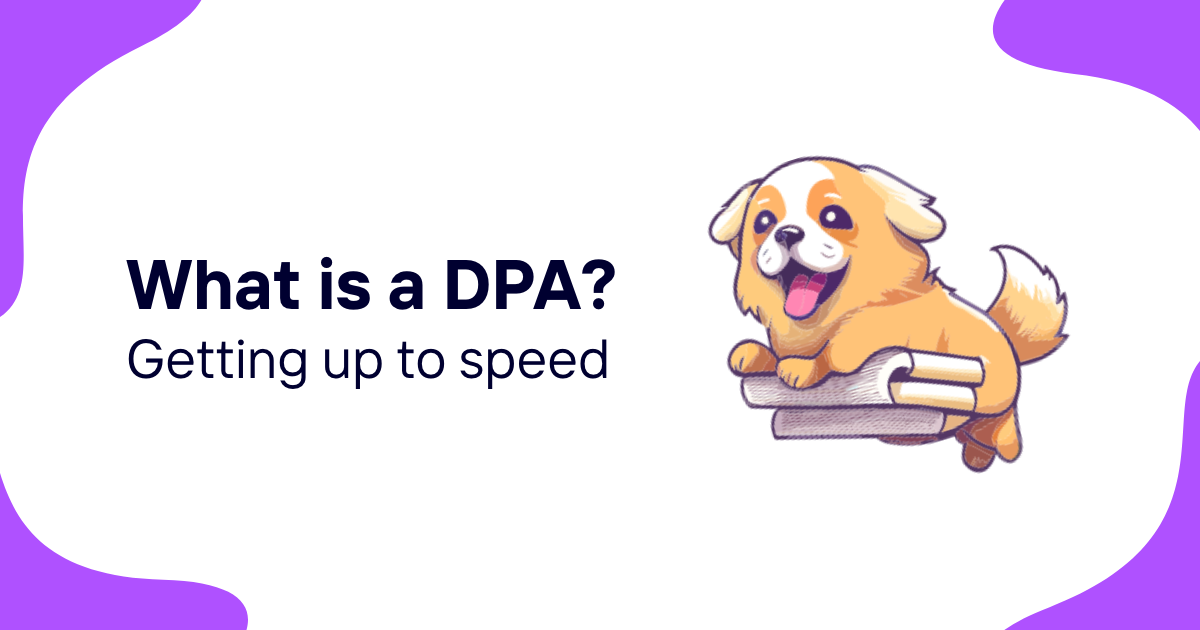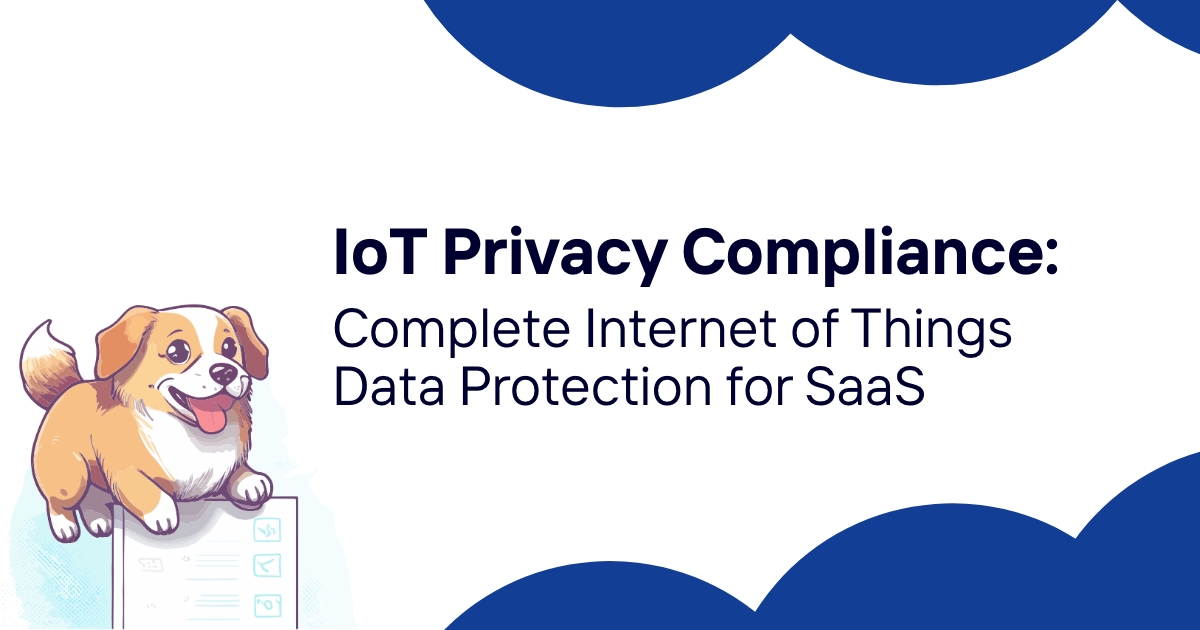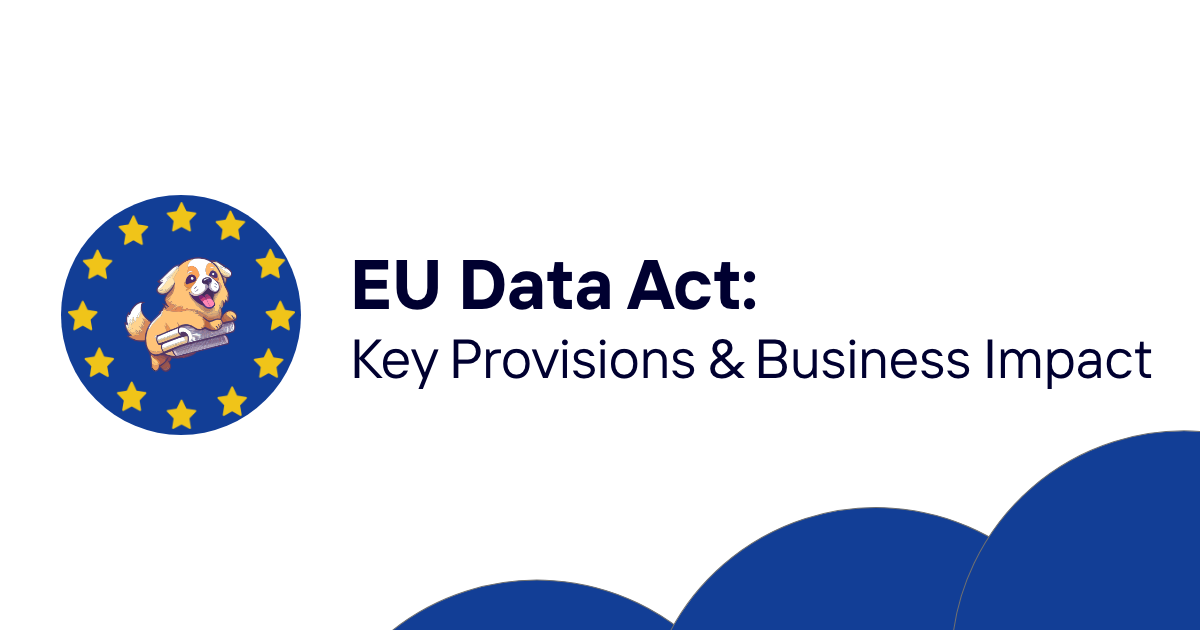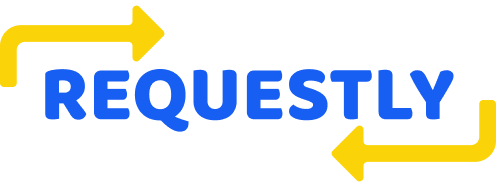The phrase "do not sell my personal information" has become a battle cry for digital privacy advocates worldwide. What started as a specific provision in California's consumer privacy law has evolved into a broader demand for transparency and control over personal data. But what does this request actually mean, and how should businesses respond when customers exercise this right?
The answer isn't as straightforward as it might seem. Different privacy laws define "selling" personal information in unique ways, and the obligations vary significantly depending on your location, business model, and the types of data you collect.
Table of contents
- What does "selling personal information" actually mean?
- The CCPA framework: Where it all began
- Beyond California: Other state privacy laws
- The GDPR perspective on data sales
- Who must honor "do not sell" requests
- How to implement do not sell mechanisms
- Common misconceptions about data selling
- Technical requirements and verification
- Business impacts of opt-out requests
- Global privacy signal compliance
- Penalties for non-compliance
- Best practices for businesses
- Consumer rights and enforcement
- Future trends in data selling regulations
- Building compliant systems
What does "selling personal information" actually mean?
The definition of "selling" personal information extends far beyond traditional monetary transactions. Most privacy laws cast a wide net that captures various forms of data sharing, including bartering, licensing, and even sharing data for valuable consideration that isn't strictly financial.
Under the California Consumer Privacy Act (CCPA), selling includes disclosing, disseminating, making available, transferring, or otherwise communicating personal information to a third party for monetary or other valuable consideration. This broad definition encompasses many common business practices that companies might not consider "selling."
Consider these scenarios that typically qualify as selling under privacy laws:
- Sharing customer data with advertising partners in exchange for reduced platform fees
- Providing user information to analytics companies that offer free services in return
- Licensing customer databases to market research firms
- Sharing data with affiliate networks for commission-based referrals
- Exchanging customer insights with business partners for cross-promotional opportunities
The key distinction lies in whether any form of value changes hands. Even if no money is involved, the exchange of personal information for services, benefits, or other considerations typically triggers the "sale" classification.
However, certain data sharing activities are explicitly excluded from the definition of selling. These exceptions include sharing data with service providers who are contractually bound to use the information solely for the business's purposes, disclosures required by law, and transfers as part of mergers or acquisitions under specific conditions.
The CCPA framework: Where it all began
California pioneered comprehensive consumer privacy rights in the United States with the California Consumer Privacy Act, which took effect in 2020. The law grants California residents four fundamental rights regarding their personal information, including the right to opt out of the sale of their personal information.
The CCPA requires businesses to provide a clear and conspicuous "Do Not Sell My Personal Information" link on their homepage. This link must lead to a webpage where consumers can submit their opt-out request without having to create an account or provide additional personal information beyond what's necessary to process the request.
The law applies to businesses that meet at least one of these criteria:
- Annual gross revenues exceeding $25 million
- Buy, receive, sell, or share personal information of 100,000 or more California consumers or households annually
- Derive 50% or more of annual revenues from selling California consumers' personal information
But here's where it gets interesting (and slightly complicated). The California Privacy Rights Act (CPRA), which amended the CCPA effective 2023, introduced additional nuances. The CPRA expanded the definition to include "sharing" personal information for cross-context behavioral advertising, creating a separate but related right to opt out of sharing.
Businesses subject to the CCPA must also maintain records of opt-out requests for at least 24 months. They cannot discriminate against consumers who exercise their privacy rights, though they may offer financial incentives for allowing data sales, provided these incentives are reasonably related to the value of the consumer's data.
The verification requirements under CCPA are purposefully minimal for opt-out requests. Unlike other privacy rights that may require identity verification, consumers can submit do-not-sell requests without proving their identity, though businesses may request verification if they have a good-faith reasonable belief that the request is fraudulent.
Beyond California: Other state privacy laws
While California led the charge, numerous other states have enacted comprehensive privacy laws with their own versions of data sale restrictions. Each law brings subtle differences that businesses operating across multiple states must navigate carefully.
Virginia's Consumer Data Protection Act (VCDPA) grants consumers the right to opt out of the sale of personal data and targeted advertising. Virginia's definition of "sale" is similar to California's but includes some unique aspects regarding the exchange of personal data for monetary consideration or other valuable consideration.
Colorado's Privacy Act (CPA) provides consumers the right to opt out of the sale of personal data for targeted advertising or profiling in furtherance of decisions that produce legal or similarly significant effects. Colorado's approach focuses more specifically on the purposes for which data is sold rather than just the act of selling itself.
Connecticut's Data Privacy Act (CTDPA) allows consumers to opt out of the sale of personal data and processing for targeted advertising. The law includes provisions for universal opt-out mechanisms, requiring businesses to recognize and honor browser-based privacy signals.
Utah's Consumer Privacy Act takes a more business-friendly approach, with narrower definitions and fewer obligations. Utah consumers can opt out of the sale of personal data, but the law includes more exceptions for legitimate business purposes.
Each state law operates independently, creating a complex compliance landscape. A business operating nationwide might need to honor opt-out requests under multiple state laws, each with slightly different requirements and definitions. Some states require businesses to recognize universal opt-out signals, while others leave this optional.
The enforcement mechanisms also vary significantly. California has both government enforcement through the Attorney General's office and private rights of action for certain violations. Virginia, Colorado, and Connecticut rely primarily on attorney general enforcement, with cure periods for first-time violations.
The GDPR perspective on data sales
The European Union's General Data Protection Regulation (GDPR) takes a fundamentally different approach to data sharing and sales. Rather than providing a specific "do not sell" right, the GDPR requires explicit consent for most data processing activities and grants individuals broad rights to control their personal data.
Under GDPR, selling personal data would typically require one of six legal bases for processing, with consent being the most relevant for commercial data sales. When consent is the legal basis, individuals have the right to withdraw their consent at any time, effectively creating a "do not sell" mechanism.
The GDPR's concept of data selling is more restrictive than many U.S. state laws. Any transfer of personal data to third parties requires a legal basis, appropriate safeguards, and often specific contractual arrangements. The regulation distinguishes between data controllers (who determine the purposes and means of processing) and data processors (who process data on behalf of controllers).
Key GDPR rights that relate to data selling include:
Right to withdraw consent: When data processing relies on consent, individuals can revoke that consent for future processing, including data sales.
Right to object: Individuals can object to processing based on legitimate interests, which often covers data sharing arrangements.
Right to data portability: Consumers can request their data in a machine-readable format, potentially to transfer it elsewhere rather than allowing continued sales.
Right to restrict processing: In certain circumstances, individuals can limit how their data is processed, which could include preventing sales.
The GDPR also includes specific provisions for international data transfers. Selling personal data to companies outside the European Economic Area requires additional safeguards, such as adequacy decisions, standard contractual clauses, or binding corporate rules.
Penalties for GDPR violations can be severe, with fines up to €20 million or 4% of annual global turnover, whichever is higher. This has led many companies to adopt GDPR-compliant practices globally rather than maintaining separate systems for different jurisdictions.
Who must honor "do not sell" requests
The obligation to honor "do not sell" requests depends on multiple factors, including the business's location, size, activities, and the types of personal information it processes. Not all businesses are subject to these requirements, and the thresholds vary significantly across different privacy laws.
Under the CCPA, businesses must comply if they meet the revenue, data volume, or data revenue thresholds mentioned earlier. But there's a catch that many businesses miss: the law applies to any business that "does business in California" and meets the thresholds, regardless of where the business is physically located.
This means an online retailer based in Texas that regularly ships to California customers and meets the $25 million revenue threshold must comply with CCPA requirements, including providing do-not-sell mechanisms for California residents.
Service providers and contractors present a more complex scenario. If a company processes personal information solely on behalf of another business under a written contract that restricts the use of personal information, it may qualify as a service provider exempt from certain CCPA obligations. However, if the same company also uses the personal information for its own commercial purposes, it becomes subject to the full range of CCPA requirements.
The sector-specific exemptions also create complexity. The CCPA includes temporary exemptions for employee and business-to-business communications, though these exemptions have sunset dates and specific limitations. Healthcare information covered by HIPAA and financial information regulated by the Gramm-Leach-Bliley Act may have different treatment under state privacy laws.
Small businesses often wonder whether they're subject to these laws. While the CCPA has high thresholds that exclude many small businesses, other state laws have lower thresholds. Virginia's VCDPA applies to businesses that control or process personal data of at least 100,000 consumers annually or derive over 50% of gross revenue from selling personal data and control or process personal data of at least 25,000 consumers.
Nonprofit organizations generally receive exemptions from most state privacy laws, but this exemption isn't universal. Nonprofits that engage in commercial activities or collect large amounts of personal data may still be subject to certain requirements.
How to implement do not sell mechanisms
Creating compliant do-not-sell mechanisms requires careful attention to both the technical implementation and the user experience. The goal is to make opting out as easy as possible while maintaining accurate records and preventing fraud.
The most visible requirement is the homepage link. This link must be clearly labeled—typically "Do Not Sell My Personal Information" or similar language specified in the applicable law. The link should be prominently displayed, easy to find, and accessible from every page of your website.
When users click the link, they should reach a dedicated webpage that explains their rights and provides a simple opt-out mechanism. This page cannot require users to create an account, log in, or provide excessive personal information. At most, you can request the minimum information necessary to process the request, such as an email address for confirmation.
Here's where many businesses struggle: the opt-out mechanism must work for both existing customers and unknown visitors. For existing customers, you might be able to match their request to existing account information. For unknown visitors, you need to capture enough information to identify future interactions while respecting their privacy.
Some technical approaches businesses use include:
Cookie-based tracking: Setting a persistent cookie that indicates the user has opted out. This approach works for web interactions but has limitations for mobile apps and cross-device tracking.
Email-based systems: Requesting an email address and maintaining a suppression list. This works well for email marketing but may not cover all data sharing activities.
Device fingerprinting: Creating a unique identifier based on device characteristics. This approach raises its own privacy concerns and may not be reliable as browsers implement more privacy protections.
Account-based systems: For businesses with user accounts, incorporating opt-out preferences into account settings. This provides the most reliable tracking but doesn't help with anonymous visitors.
Many businesses implement multiple mechanisms to ensure comprehensive coverage. A typical implementation might combine cookie-based tracking for immediate web interactions, email suppression lists for marketing activities, and account-based preferences for logged-in users.
The response time requirements vary by jurisdiction, but most laws require businesses to honor opt-out requests within a specific timeframe, typically 15 days. This means your systems need to process requests quickly and update all relevant data sharing arrangements.
Common misconceptions about data selling
One of the biggest misconceptions about data selling regulations is that they only apply to companies that literally sell customer databases for money. This narrow interpretation misses the broader scope of what constitutes "selling" under modern privacy laws.
Many businesses argue they don't "sell" data because they don't receive direct payment. But this interpretation ignores the "valuable consideration" aspect of most definitions. When a business shares customer data with an advertising network in exchange for reduced platform fees, that's typically considered selling under privacy laws, even though no money changes hands directly.
Another common misconception involves the service provider exception. Some businesses believe that any third-party data sharing qualifies as a service provider relationship, but this exception has specific requirements. The third party must be contractually bound to use the data solely for the business's purposes and cannot use the data for their own commercial benefit.
Consider this scenario: A retailer shares customer purchase data with a marketing analytics company. If the analytics company uses the data solely to provide insights back to the retailer and is contractually prohibited from using the data for other purposes, this might qualify as a service provider relationship. But if the analytics company also uses the aggregated data to improve their own products or services, they're likely operating as a third party, making the data sharing a "sale."
The "business purpose" exception also creates confusion. Some businesses believe that any data sharing for legitimate business purposes is exempt from selling restrictions. However, most privacy laws define business purposes narrowly and require specific conditions to be met.
Here are some activities that businesses often don't realize constitute selling:
- Sharing customer data with affiliate marketing networks
- Providing user information to social media platforms for custom audience creation
- Exchanging data with business partners for joint marketing campaigns
- Licensing customer insights to market research companies
- Sharing data with technology vendors who provide "free" services in exchange for data access
The affiliate marketing industry has been particularly impacted by these regulations. Many traditional affiliate arrangements involve sharing customer data with affiliate networks, which then distribute it to individual affiliates. These arrangements often qualify as sales under privacy laws, requiring businesses to implement opt-out mechanisms and honor consumer requests.
Cross-device tracking presents another area of confusion. When businesses work with data brokers to match customer identities across different devices and platforms, these arrangements often involve data sharing that constitutes selling. The fact that the matching happens algorithmically doesn't exempt it from privacy regulations.
Technical requirements and verification
Building technically compliant do-not-sell systems requires careful consideration of data flows, user identification, and verification processes. The technical requirements vary across different privacy laws, but several common principles apply.
User identification presents the first technical challenge. When a consumer submits a do-not-sell request, businesses need to determine which records and data sharing activities to stop. For registered users, this might be straightforward—link the request to their account and update their preferences. For anonymous visitors, the challenge is much greater.
Most privacy laws intentionally keep verification requirements minimal for opt-out requests to reduce barriers to exercising privacy rights. However, businesses can implement reasonable verification measures to prevent fraudulent requests that could disrupt legitimate business operations.
A typical verification workflow might include:
- Initial request capture: Collect the minimum necessary information, such as an email address or phone number
- Confirmation step: Send a confirmation email or SMS to verify the consumer controls the provided contact information
- Processing: Update internal systems and notify relevant third parties
- Confirmation: Notify the consumer that their request has been processed
The Global Privacy Control (GPC) signal adds another technical dimension. This browser-based signal allows consumers to communicate their opt-out preferences automatically. Businesses subject to laws that require recognizing universal opt-out signals must implement systems to detect and honor GPC signals.
Implementing GPC support involves:
- Detecting the GPC header or JavaScript property when users visit your website
- Automatically processing the signal as an opt-out request for applicable privacy rights
- Confirming the request through your normal opt-out workflow
- Maintaining records of GPC-initiated requests
Data flow mapping becomes critical for technical implementation. Businesses need to understand all the ways personal information flows to third parties and ensure their opt-out systems can interrupt these flows effectively. This often requires coordination across multiple systems and teams.
Consider a typical e-commerce business that might share data through:
- Advertising pixels on their website
- Email marketing integrations
- Customer service platforms
- Analytics tools
- Affiliate marketing networks
- Social media platforms
Each of these integration points needs to be updated when a consumer opts out of data sales. Some integrations might support real-time suppression lists, while others require batch updates or manual intervention.
The timing requirements add pressure to these technical implementations. Most privacy laws require businesses to honor opt-out requests within 15 days, which means automated systems are often necessary for businesses with high request volumes.
Business impacts of opt-out requests
The financial implications of do-not-sell requests extend far beyond compliance costs. For businesses that rely heavily on data monetization, widespread adoption of opt-out rights could significantly impact revenue streams and business models.
Advertising-dependent businesses face particular challenges. Digital advertising relies on detailed consumer profiles built from data sharing across platforms and partners. When consumers opt out of data sales, businesses may lose access to valuable targeting capabilities, potentially reducing advertising effectiveness and revenue.
The impact varies significantly based on opt-out rates. Early data from California suggests that opt-out rates for data selling range from 3% to 15% of website visitors, depending on the industry and how prominently the opt-out option is presented. However, these rates are expected to increase as consumer awareness grows and browser-based privacy signals become more prevalent.
Some industries see higher opt-out rates than others:
Financial services: Consumers are particularly sensitive about financial data sharing, leading to higher opt-out rates in banking and insurance sectors.
Healthcare: Medical information generates strong privacy concerns, though much healthcare data is already protected by HIPAA and may not fall under general privacy law requirements.
Social media: Paradoxically, social media platforms often see lower opt-out rates, possibly because users expect data sharing as part of the service model.
E-commerce: Online retailers typically see moderate opt-out rates, with variation based on their privacy reputation and customer relationships.
The operational impacts can be substantial. Processing opt-out requests requires dedicated staff time, system updates, and ongoing monitoring. Businesses need to maintain suppression lists, coordinate with third-party partners, and ensure compliance across all data sharing activities.
Some businesses have responded by restructuring their data practices to reduce reliance on third-party data sharing. This might involve:
- Building first-party data collection capabilities
- Investing in direct customer relationships
- Developing alternative revenue streams that don't depend on data sales
- Improving data governance to minimize unnecessary data sharing
The competitive implications also merit consideration. Businesses that handle privacy requests efficiently and transparently may gain competitive advantages as consumers become more privacy-conscious. Conversely, businesses with poor privacy practices may face reputational damage and customer loss.
Global privacy signal compliance
The Global Privacy Control represents a significant evolution in how consumers can exercise their privacy rights. Rather than requiring manual opt-out requests for every website, GPC allows consumers to set a browser-based preference that automatically communicates their privacy choices.
GPC is supported by major privacy-focused browsers and browser extensions, and several U.S. state laws now require businesses to recognize and honor GPC signals. California's CPRA explicitly requires businesses to treat GPC signals as valid opt-out requests for both data sales and sharing for cross-context behavioral advertising.
From a technical perspective, GPC works through two mechanisms:
- An HTTP header (
Sec-GPC: 1) sent with web requests - A JavaScript API (
navigator.globalPrivacyControl) that websites can query
When a business detects a GPC signal, they must treat it as an opt-out request from that particular browser or device. This creates some implementation challenges because the signal is device-specific rather than user-specific.
The legal requirements for GPC compliance continue to evolve. Currently, California requires businesses to honor GPC signals, and Connecticut has similar requirements. Other states are considering whether to mandate GPC recognition in their privacy laws.
Businesses implementing GPC compliance typically follow this workflow:
- Detect GPC signals on website visits
- Automatically suppress data sharing activities for that browser/device
- Provide clear notice about the GPC signal and its effects
- Allow users to override the signal if they choose
- Maintain records of GPC-initiated opt-outs
The user experience considerations are important. When a website detects a GPC signal, they should inform the user that their privacy preferences have been recognized and explain what data sharing activities will be stopped. Some businesses provide options to selectively enable certain data sharing while maintaining the overall opt-out preference.
Industry adoption of GPC continues to grow, with privacy advocacy groups pushing for broader recognition and businesses gradually implementing support. The signal represents a shift toward more automated privacy protection, reducing the burden on consumers to manually opt out from every website they visit.
Penalties for non-compliance
The enforcement landscape for data selling violations varies significantly across jurisdictions, but the trend toward substantial penalties is clear. Businesses that fail to provide proper opt-out mechanisms or honor consumer requests face increasing regulatory scrutiny and financial consequences.
California's enforcement approach combines government action with limited private rights of action. The California Attorney General can impose civil penalties of up to $2,500 per violation, or $7,500 for intentional violations. For businesses with high transaction volumes, these penalties can accumulate quickly.
The CCPA also allows consumers to sue for statutory damages of $100 to $750 per consumer per incident for certain data breaches, though this private right of action is limited to security breaches rather than general privacy violations like failing to honor opt-out requests.
Other state laws typically rely on attorney general enforcement without private rights of action. Virginia, Colorado, and Connecticut provide cure periods for first-time violations, allowing businesses to correct problems before facing penalties. However, repeat violations or willful non-compliance can result in substantial fines.
Virginia's VCDPA allows civil penalties up to $7,500 per violation. Colorado's CPA provides for penalties up to $20,000 per violation. Connecticut's CTDPA sets maximum penalties at $5,000 per violation.
The calculation of "per violation" can be complex. Regulators might count each consumer affected as a separate violation, each day of non-compliance as a separate violation, or each instance of improper data sharing as a separate violation. This means that systemic compliance failures can result in millions of dollars in penalties.
Beyond direct financial penalties, enforcement actions can create significant indirect costs:
- Legal fees for defending against enforcement actions
- Consulting costs for compliance remediation
- Reputational damage affecting customer relationships and business partnerships
- Operational disruption during investigations and remediation efforts
The Federal Trade Commission has also increased its focus on privacy violations, using its authority under Section 5 of the FTC Act to pursue companies for unfair or deceptive practices related to privacy. While the FTC doesn't directly enforce state privacy laws, it can take action when businesses make misleading privacy claims or fail to implement promised privacy protections.
Some notable enforcement actions include:
- Settlements with social media companies for privacy violations ranging from hundreds of thousands to billions of dollars
- Actions against data brokers for selling sensitive personal information without proper consent
- Cases involving dark patterns that discourage consumers from exercising privacy rights
The enforcement trend suggests that regulators are becoming more sophisticated in their approach to privacy violations. Rather than focusing solely on data breaches, enforcement agencies are paying attention to systemic compliance issues, inadequate privacy notices, and barriers to exercising consumer rights.
Best practices for businesses
Developing a comprehensive approach to do-not-sell compliance requires integrating privacy considerations into business operations at multiple levels. The most successful businesses treat privacy compliance as an ongoing operational requirement rather than a one-time implementation project.
Privacy by design principles should guide system architecture and business processes. This means considering privacy implications from the initial design phase of products and services rather than retrofitting compliance later. For data sharing arrangements, this involves evaluating whether third-party integrations are necessary and implementing privacy-protective alternatives where possible.
Data mapping and inventory form the foundation of effective compliance. Businesses need to understand what personal information they collect, how it flows through their systems, and where it's shared with third parties. This inventory should be detailed enough to support opt-out request processing and should be updated regularly as business practices evolve.
Regular compliance audits help identify gaps and ensure ongoing compliance. These audits should examine:
- The effectiveness of opt-out mechanisms
- Response times for processing requests
- Accuracy of suppression lists
- Third-party compliance with contractual privacy requirements
- Website privacy notice accuracy and completeness
Staff training across departments helps ensure consistent compliance. Privacy compliance isn't solely the responsibility of legal or compliance teams—customer service representatives need to understand how to handle privacy requests, marketing teams need to understand data sharing restrictions, and technical teams need to implement privacy controls effectively.
Vendor management becomes particularly important for businesses that rely on third-party service providers. Privacy compliance requires ensuring that all vendors understand and comply with applicable privacy requirements. This often involves updating contracts to include specific privacy obligations and monitoring vendor compliance through audits or certifications.
Documentation and record-keeping support both compliance and enforcement defense. Businesses should maintain records of:
- Privacy policy updates and the rationale for changes
- Opt-out requests and how they were processed
- Third-party data sharing agreements and their privacy terms
- Staff training on privacy requirements
- System changes implemented for privacy compliance
Incident response planning helps businesses respond effectively when privacy issues arise. This includes procedures for handling privacy complaints, responding to regulatory inquiries, and addressing potential privacy violations. Having established procedures reduces response time and helps prevent minor issues from becoming major enforcement actions.
Technology solutions can help automate many compliance tasks, but they need to be implemented thoughtfully. Privacy management platforms can help track consent, process opt-out requests, and maintain audit trails. However, these tools are only effective if they're configured properly and integrated into business processes.
Consumer rights and enforcement
Consumer awareness of privacy rights continues to grow, driven by media coverage of data breaches, regulatory enforcement actions, and privacy advocacy efforts. This increased awareness translates to more consumers exercising their privacy rights, including opting out of data sales.
The consumer experience of exercising privacy rights varies significantly across businesses and industries. Some companies have invested in user-friendly privacy centers that make it easy to exercise multiple privacy rights from a single interface. Others provide only the minimum required mechanisms, which can frustrate consumers and potentially lead to complaints.
Consumer advocacy organizations play an important role in privacy enforcement through several mechanisms:
- Filing complaints with regulatory agencies about non-compliant businesses
- Conducting studies and audits of business privacy practices
- Educating consumers about their privacy rights
- Advocating for stronger privacy laws and enforcement
The complaint process typically begins when consumers have difficulty exercising their privacy rights or believe businesses aren't honoring their requests properly. State attorneys general offices usually investigate these complaints and may initiate formal enforcement actions for systematic violations.
Private rights of action remain limited under most U.S. privacy laws, but consumers do have other recourse options:
- Complaints to regulatory agencies
- Better Business Bureau complaints
- Social media and review site feedback that can damage business reputations
- Class action lawsuits under other legal theories when privacy violations cause measurable harm
The role of browser makers and technology platforms is becoming increasingly important in privacy enforcement. Major browsers are implementing features like GPC that make it easier for consumers to exercise privacy rights automatically. App stores are requiring privacy labels and consent mechanisms. Social media platforms are changing their data sharing policies in response to regulatory pressure.
Industry self-regulation also influences consumer privacy experiences. Trade associations in advertising, retail, and technology sectors have developed privacy best practices and certification programs. While these voluntary measures don't have the force of law, they can influence industry standards and consumer expectations.
Consumer expectations continue to evolve as privacy becomes a more prominent business and social issue. Younger consumers, in particular, expect businesses to provide transparent privacy controls and respect their privacy choices. Businesses that meet these expectations may gain competitive advantages, while those that lag behind may face customer loss and reputational damage.
Future trends in data selling regulations
The privacy regulatory landscape continues to evolve rapidly, with new laws under consideration in multiple states and at the federal level. These developments will likely expand the scope of do-not-sell requirements and create additional compliance challenges for businesses.
Federal privacy legislation remains a possibility, though political disagreements about the scope and enforcement mechanisms have prevented passage of comprehensive federal privacy laws. If federal legislation does pass, it could preempt some state privacy laws while potentially creating uniform national standards for data selling restrictions.
Several trends are emerging in new privacy legislation:
- Lower thresholds: Newer laws tend to apply to smaller businesses by reducing revenue and data volume thresholds
- Broader definitions: Expanded definitions of "selling" and "sharing" that capture more business activities
- Stronger enforcement: Higher penalties and more enforcement mechanisms
- Technical requirements: Mandates for recognizing universal opt-out signals and providing standardized APIs for privacy requests
The international influence on U.S. privacy law continues to grow. The European Union's Digital Services Act and Digital Markets Act create new obligations for large online platforms, some of which relate to data sharing and consumer control. These laws may influence U.S. approaches to regulating digital platforms and data sharing.
Artificial intelligence and machine learning create new challenges for privacy regulation. As businesses increasingly use AI systems that rely on large datasets, questions arise about whether training AI models constitutes "selling" data and how consumers can exercise privacy rights in AI contexts.
The browser and technology platform ecosystem is also driving change. Major browsers are implementing features that block third-party tracking by default, make it easier to exercise privacy rights, and provide more transparency about data sharing. These changes may reduce the need for regulatory intervention while making privacy compliance more challenging for businesses that rely on third-party data sharing.
Industry consolidation in the data broker and advertising technology sectors may also influence privacy regulation. As fewer companies control larger portions of the data sharing ecosystem, regulators may focus more attention on these central players and their privacy practices.
Building compliant systems
Creating robust systems for handling do-not-sell requests requires careful planning and ongoing maintenance. The most effective approaches integrate privacy controls into existing business systems rather than treating privacy as a separate compliance layer.
System architecture considerations include designing data flows that can be easily interrupted when consumers opt out. This might involve implementing feature flags that can disable specific data sharing activities, maintaining real-time suppression lists that are checked before sharing data, or restructuring systems to make third-party data sharing optional rather than built into core business processes.
Data architecture should support privacy compliance through careful data modeling and storage practices. Personal information should be tagged with privacy preferences and consent status. Data sharing logs should track what information was shared with which parties and when, enabling businesses to retrospectively honor opt-out requests and demonstrate compliance.
API design for privacy requests should prioritize simplicity and reliability. Many businesses implement dedicated privacy APIs that can process opt-out requests, manage consent preferences, and provide status updates. These APIs should be designed to handle high volumes of requests and integrate easily with third-party privacy management tools.
User interface design affects both compliance and user experience. Privacy controls should be easy to find, clearly labeled, and simple to use. The opt-out process should work consistently across different devices and platforms. Mobile applications need to provide privacy controls that are as accessible as those on desktop websites.
Integration challenges often arise when businesses use multiple third-party services for different aspects of data sharing. Each integration may have different capabilities for honoring opt-out requests. Some services provide real-time APIs for suppression lists, while others require batch updates or manual coordination.
Performance considerations become important for high-traffic businesses. Checking opt-out status for every data sharing decision could impact system performance if not implemented efficiently. Common approaches include caching opt-out status, using asynchronous processing for non-critical data sharing, and optimizing database queries for privacy preference lookups.
Testing and validation help ensure that privacy systems work correctly under various conditions. This includes testing opt-out mechanisms with different user agents and devices, validating that third-party integrations properly respect opt-out preferences, and confirming that privacy settings persist correctly across user sessions.
Building for compliance means preparing for ongoing changes in privacy requirements. Systems should be flexible enough to accommodate new privacy rights, different opt-out mechanisms, and changing definitions of data selling. This often involves creating configuration-driven systems rather than hard-coding privacy logic into application code.
The most successful businesses view privacy compliance as an opportunity to build better customer relationships through transparency and control. By making privacy rights easy to exercise and clearly explaining data practices, businesses can differentiate themselves in an increasingly privacy-conscious marketplace.
Privacy compliance software has become an essential tool for many businesses struggling to keep pace with evolving privacy regulations. Platforms like ComplyDog provide comprehensive solutions that automate many aspects of GDPR compliance, including managing consent, processing data subject requests, and maintaining compliance documentation. These integrated platforms help businesses implement robust privacy programs without requiring extensive internal technical resources, making compliance more accessible for companies of all sizes. Learn more about streamlining your privacy compliance at ComplyDog.com.

